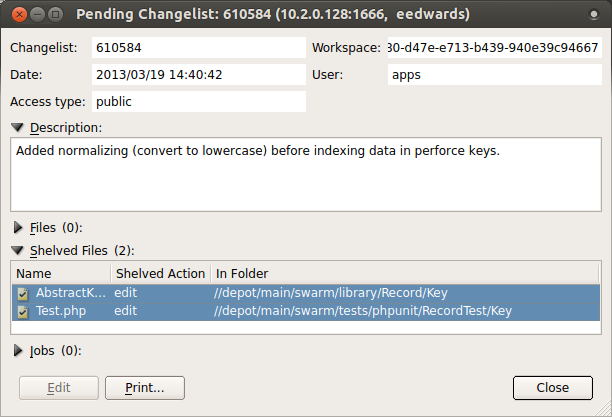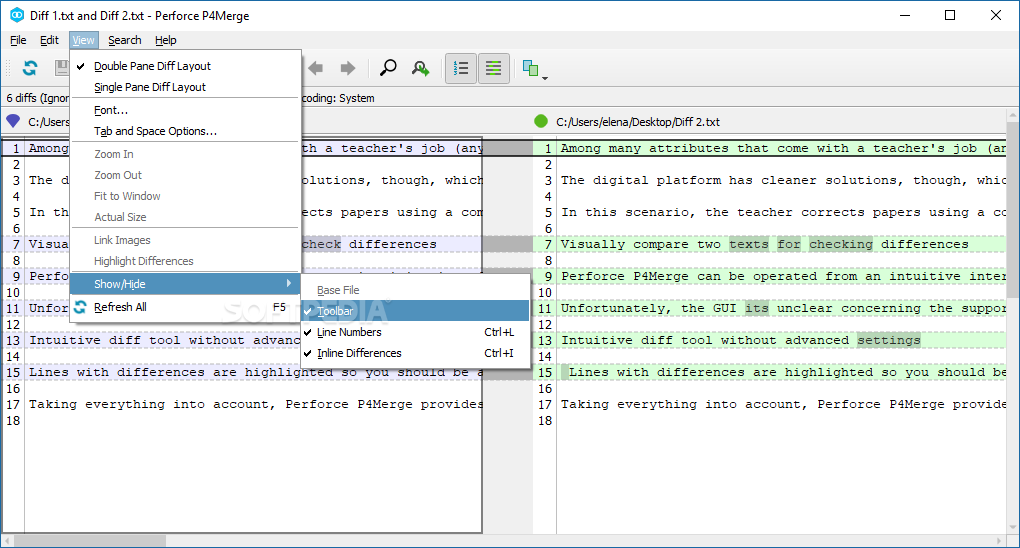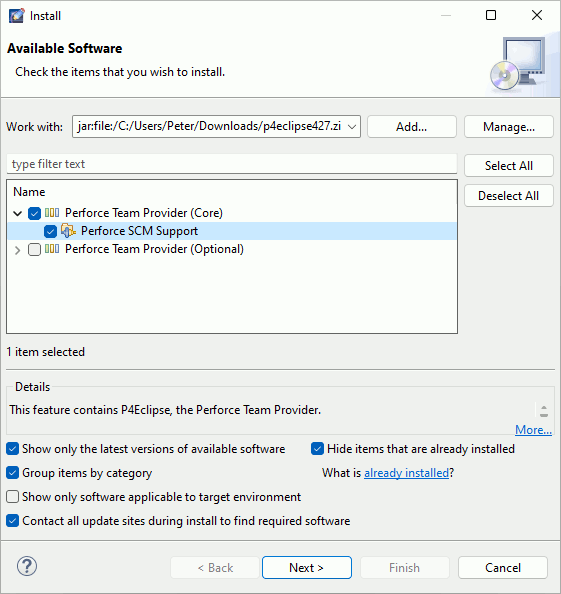

Open a terminal or cmd browse to the folder containing the downloaded p4 Match the following picture to set perforce server to create a checkpoint at midnight every weekday.Īfter installing and starting P4D (Server) test your connectionĭownload p4 and copy it to a local directory We suggest using Cronnix to modify your cron settings.

You can set the “Start P4 Server” script to run at login on your server or set it in cron.Īlso you can use the “Create P4 Checkpoint to create your perforce backups and journals and attach it to a cron every day.
#Perforce download p4 license#
If you have a Perforce license file copy it into “p4droot”. Make a folder in the users folder (admin) named perforceServerĬreate the following folders within perforceServerĭownload the p4d scripts Perforce OSX launch scripts and unzip them into the scripts folder.Įdit p4d.sh edit the line “-p 192.168.1.9:1666 \” to match the IP of your server and change the default port of 1666.
#Perforce download p4 install#
Please refer to Perforce’s install and admin documentation for full docsĬreate a user named admin in System Preferences: Accounts Microsoft Visual C++ 2010 Redistributable Package (x86) installed. We cannot guarantee compatibility on other versions of Unit圓D or Perforce.


#Perforce download p4 pro#
There’s also a Perforce plugin for Jenkins, which once installed allows you to choose Perforce as one of the SCM option in your Jenkins jobs, but the above hopefully covers the initial setup of both the Perforce Client and the Perforce Server on Windows and Linux respectively.P4U has been tested with Unity Pro 3.3.0, 3.4.2f3, 3.5.0f1 and Perforce server 9.2 – 11.1. The Perforce Help and Documentation is all very good, and their Perforce 2010.2: System Administrator’s Guide covers all of the above in more detail, and touches on more advanced topics too – Perforce Performance Tuning, Backup and Recovery, Replication, and the Perforce Broker (P4Broker) etc. There are also command line and web interfaces too which can be useful for temporary use and for scripting but the Windows GUI’s are nice to use and quite self explanatory – if you’ve used a similar revision control system like Subversion and an Eclipse-like IDE before there’s not much of a learning curve here. Once that’s done, you can admin your Depot’s and add/change/commit files, see revision and history information and all that good stuff. Now you can test connecting to your Perforce Server with the P4Admin GUI and the P4V GUI on the Windows client host by specifying the correct port (if you changed the default) and a valid user name. Oh, I also needed to create a user, so back on the Linux Server I also downloaded the p4 binary:Įxported the P4PORT (since I was using a custom one to get through my firewalls), then add a user: There’s nothing really to report here select the usual options like directories and let it install. I’m going for a Windows client installation, which means downloading the correct version from the Perforce site then running p4vinst.exe. That’s it for the Server side at the moment, there’s a process up and running (you can check the output in nohup.out) so it’s time to set up and connect a client… Which I will probably put in to a simple startPerforce.sh script, and a probably a stopPerforce.sh script too that contains this and maybe the port number and full path to the binary location: p4d -r /apps/perforce -J /var/log/journal -L /var/log/p4err -p 9002 & So I ended up with a command line that looked like this: The default port is 1666, and remember that if you change this on the Server you will need to change it on your Perforce client(s) too. Most Perforce options can either be exported or passed as a command-line arg, so you can choose You can put this wherever you want, and set up a P4ROOT to specify the Perforce root directory – but don’t use that location for anything else (including client workspaces). Basically, get the binary, export or pass it a few settings if you don’t want the defaults, then kick it off – here’s the detail from my notes:ĭownload p4d binary (for this platform and architecture): There’s not a lot to do when installing Perforce, so getting a straightforward instance up and running is a breeze. In my case, the server is an Ubuntu Linux host, and my client machine is a Windows XP workstation. I wanted to check out the latest version so thought I’d install it on this server and set up a client… and that I may as well capture the steps and put them here. Like Subversion, it’s a client/server system where the server manages a database of revisioned files, and clients connect to checkout, modify and send back changes for others to pick up. As described on WikiPedia, Perforce “is a commercial, proprietary, centralized revision control system developed by Perforce Software, Inc.”


 0 kommentar(er)
0 kommentar(er)
